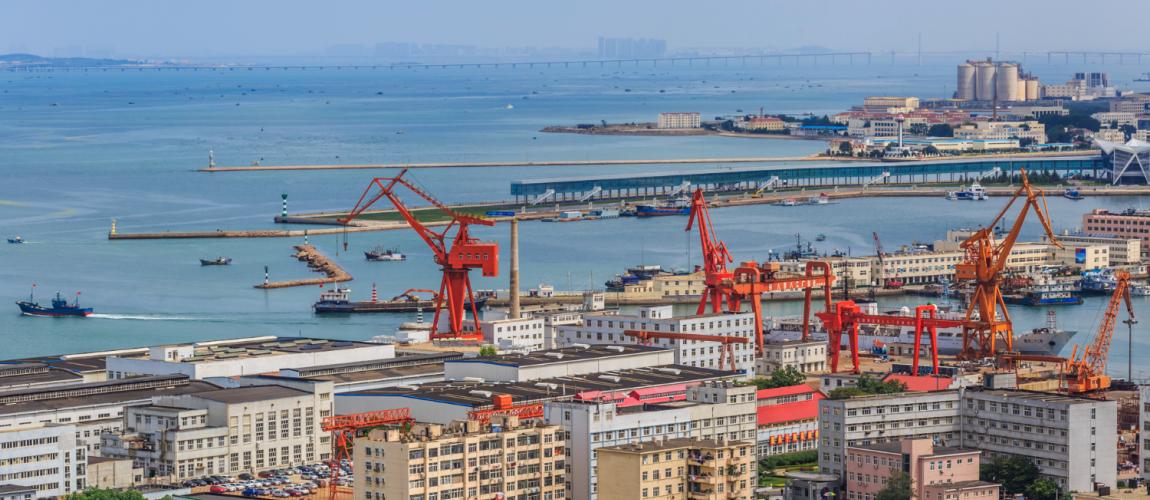Durban Point Waterfront Development Project, Ethekwini, South Africa

Photo Credit: Image by Freepik
On this page: A case study on Durban Point Waterfront Development Project, Ethekwini, South Africa. Find more at the Municipal Public-Private Partnership Framework - Project Summaries section for brief summaries of around 100 projects from around the world, examples of successes and challenges, as well as innovative ideas on solutions, or visit the Guidelines on Innovative Revenues for Infrastructure section.
Project Summary: Background At the entrance to Durban Harbour, which is the busiest port in Africa, there lies the Durban Point Waterfront. Paradoxically, the Waterfront was largely abandoned and only used by a small group of people. To optimize the use of this space, the Point Waterfront development project was conceived and being pursued by the eThekwini municipality following its Development Framework Plan; which grants mixed-use development rights for this land. Early development projects in the area were faced with high skepticism by existing users, but in 2015, a new development company was established to pursue the project, and a new urban development was envisioned taking into account the current users concerns. Project Structure The Point Waterfront plan consists of a modern, mixed-use development project covering 750,000 square meters of bulk floor area, to be undertaken in three phases over the next five to ten years. The project is divided into 6 precincts and a promenade. Precinct 1 will be primarily residential and offices, with a few retail spaces. Precinct 2, which abuts the uShaka Marine World Theme Park, will contain high-end stores, hotels and condominiums. Precinct 3 consists of mainly historic buildings with limited redevelopment options due to their heritage status, though these have attracted the interest of several investors. Precinct 4 offers a sea-view and it is anticipated that developments in this space will be residential and commercial. Precinct 5 provides immediate access to the beach and will feature high-rise residential buildings; restaurants and bars. Precinct 6 is the intended site for the public transportation node, high-tech commerce and parking facilities. Finally, the promenade will be constructed along precinct 5 and will provide a continuous walking space along the shore, facing the beach that will accommodate commercial areas and public facilities, such as toilets, changing rooms, and spaces for watersports clubs. The ZAR 35 billion (USD 2.5 billion) project’s master developer is the Durban Point Waterfront Development Company (DPDC), a joint venture owned in equal parts by the eThekwini municipality and RocPoint Ltd., a private consortium that is majority-owned by UEM Sunrise, a publicly-listed Malaysian company and one of Malaysia’s top property developers. DPDC has invested about ZAR120 million (USD 8 million) in upgrading infrastructure on the project site. It has also sold about ZAR 190 million (USD 13 million) of land to private investors for development, which has resulted in about ZAR 1 billion (USD 71 million) in privately financed construction costs alone. The property values of the existing properties in the area are forecast to increase by 10 percent per annum at least, as a result of the developments. By comparison, property values in the central business district are expected to increase by only 5 percent per annum. According to eThekwini Mayor Zandile Gumede, the gross public revenues derived from various taxes applicable to the area could amount to an additional ZAR 1.7 billion (USD 12 million). The community will also benefit from the project by having public access to the beach and the entire area through modern sidewalks and canals within Point Waterfront. The canals and walkways are owned by the local authority, but their management is carried out by the Lot Owners Association. Lessons Learned The project commenced construction at the beginning of 2018, beginning with the beach promenade.1 Footnote 1: Source(s) accessed on January 26, 2019 http://www.durban. gov.za/City_Services/ development_ planning_management/ Land_Use_ Management/Town_ Planning_Regulations/ Special_Zones/Pages/ Point_Waterfront.aspx http://www.pravinamar. com/reports/ downloads/small_craft_ harbour/BRDPDC.pdf http://www.durban.gov. za/Resource_Centre/ Press_Releases/ Pages/Beachfront- Promenade- Extension-to-Support- Point-Waterfront- Development.aspx https://uemsunrise. com/property/region/ durban-point https://www. durbanpoint.co.za/
The Guidelines on Innovative Revenues for Infrastructure (IRI) is intended to be a living document and will be reviewed at regular intervals. They have not been prepared with any specific transaction in mind and are meant to serve only as general guidance. It is therefore critical that the Guidelines be reviewed and adapted for specific transactions.
To find more, visit the Innovative Revenues for Infrastructure section and the Content Outline, or Download the Full Report. For feedback on the content of this section of the website or suggestions for links or materials that could be included, please contact the Public-Private Partnership Resource Center at ppp@worldbank.org.
Updated:
TABLE OF CONTENTS
I. Innovative Revenues for Infrastructure (IRI)
2. Introduction to Commercial Value Capture (CVC)
3. Applying CVC in Infrastructure Projects
2. Case Studies in CVC from International Experiences
Related Content
Select WBG PPP Toolkits
Featured Section Links
Additional Resources
Climate-Smart PPPs
Type of ResourceFinance Structures for PPP
Type of ResourceFinancing and Risk Mitigation
Type of Resource